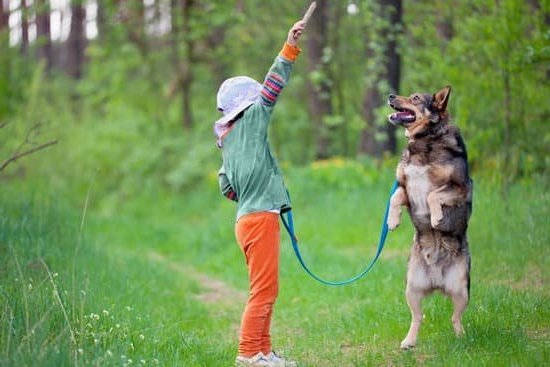How long does dog training take is a common question among pet owners looking to improve their furry friend’s behavior. Dog training is not just about teaching your pet to sit or stay; it plays a crucial role in shaping their overall well-being and integration into your family. Training can help strengthen the bond between you and your dog, enhance communication, and ensure safety in various situations.
Factors such as the age of your dog, their breed, temperament, previous experiences, and your consistency play a significant role in determining the duration of the training process. While some dogs may pick up commands quickly, others might require more time and patience. Understanding these factors can help set realistic expectations and create a structured training plan tailored to your dog’s unique needs.
In this article, we will delve into the different aspects of dog training timelines, from basic obedience skills to advanced techniques. By exploring the essential elements of training duration and techniques, you will gain valuable insights into how to effectively train your dog while enjoying the process together. Stay tuned for practical tips on expediting the training progress and recognizing when your dog is ready for the next level of challenges.
Factors Influencing the Duration of Dog Training
When embarking on the journey of training your dog, it is important to understand that the duration of training can vary depending on several factors. One crucial element is the age of your dog. Puppies tend to learn more quickly due to their young age and ability to adapt, while older dogs may take a bit longer to grasp new commands.
Additionally, the breed of your dog can also influence how long training will take. Some breeds are known for their intelligence and ease of training, while others may require more time and patience.
Another factor that can impact the duration of dog training is consistency in your approach. If you are consistent in reinforcing positive behaviors and practicing commands regularly, your dog is likely to learn at a faster pace. On the other hand, if you are inconsistent with your training methods or expectations, it may take longer for your dog to understand what is expected of them.
Additionally, the amount of time you are able to dedicate to training each day can affect how long it takes for your dog to learn new skills. Short, frequent training sessions spread throughout the day may be more effective than one long session. By understanding these factors and adapting your approach accordingly, you can help expedite the training process for your furry friend.
Basic Obedience Training Timeline
Introduction: Starting the Training Journey
Training your dog in basic obedience is essential for their well-being and the harmonious relationship between you and your furry companion. Basic obedience training includes teaching commands like sit, stay, come, heel, and more. These foundational skills are not only useful in everyday life but also provide a solid foundation for more advanced training down the line. But one question that often comes to mind is: how long does dog training take?
The Timeline for Basic Obedience Training
The duration of basic obedience training can vary depending on several factors such as the age of the dog, breed, temperament, previous experiences, and consistency in training sessions. On average, it can take anywhere from a few weeks to several months to teach your dog the basics. Puppies tend to learn quicker than older dogs due to their increased receptiveness to new information.
Consistency Is Key
Consistent daily practice is crucial in speeding up the training process. Short but frequent training sessions are more effective than long sporadic ones. It’s important to maintain a positive attitude and use positive reinforcement techniques during training to keep your dog engaged and motivated. Remember, every dog learns at their own pace so patience is key when embarking on this journey with your furry friend.
Advanced Training Techniques and Their Time Commitment
When it comes to advanced training techniques for dogs, the time commitment required can vary depending on the specific skills you are aiming to teach your furry friend. Advanced training often involves more complex commands and behaviors that may take longer for your dog to master compared to basic obedience training. Some of the advanced techniques that might require more time include off-leash training, agility training, trick training, and specialized task training.
Off-leash training, for example, can be a challenging yet rewarding technique to teach your dog. It involves having your dog respond to commands without the need for a leash in various environments. The duration of off-leash training can range from several weeks to a few months, depending on your dog’s learning pace and previous obedience training experience. Consistency and patience are key during this process to ensure that your dog understands and follows commands reliably.
Agility training is another popular advanced technique that requires time and dedication. This type of training involves teaching your dog to navigate obstacle courses with speed and precision. The time commitment for agility training can vary based on factors such as your dog’s athleticism, coordination, and motivation levels.
It may take several months to a year or more for your dog to become proficient in agility skills. Regular practice sessions, positive reinforcement, and gradually increasing the difficulty of the obstacles are essential elements in achieving success in agility training.
| Advanced Technique | Time Commitment |
|---|---|
| Off-leash Training | Several weeks to a few months |
| Agility Training | Several months to a year or more |
The Role of Consistency in Dog Training Duration
Consistency plays a crucial role in determining how long dog training will take to be effective. By maintaining a consistent training schedule and approach, you are setting your dog up for success. Here are some key points to consider when it comes to the role of consistency in dog training duration:
- Establishing a Routine: Dogs thrive on routine and structure. By consistently practicing commands and exercises at the same time each day, you are reinforcing their learning and helping them understand what is expected of them.
- Using Positive Reinforcement: Consistency in using positive reinforcement, such as treats or praise, when your dog exhibits the desired behavior is essential. This helps them associate the action with a reward, making them more likely to repeat it in the future.
- Avoiding Mixed Signals: Inconsistent commands or responses can confuse your dog and prolong the training process. It is important to use clear, consistent language and signals when working with your furry friend.
By being diligent and consistent in your training efforts, you can help speed up the learning process for your dog. Remember that every dog is different, so it’s important to be patient and persistent throughout the training journey. With dedication and consistency, you will see progress over time.
Practical Tips for Speeding Up the Training Process
When it comes to dog training, many owners are eager to see quick results. While the time it takes to train a dog can vary depending on several factors, there are some practical tips that can help speed up the training process. One key tip is to keep training sessions short and frequent. Dogs have short attention spans, so training for 10-15 minutes multiple times a day is often more effective than one long session.
Another tip for accelerating the training process is to use positive reinforcement techniques such as treats, praise, and play. When dogs associate good behavior with rewards, they are more likely to repeat that behavior.
Consistency is also crucial in speeding up training – using the same commands and cues every time helps dogs understand what is expected of them. It’s important to remember that each dog is unique, so finding what motivates your specific pet can greatly enhance the training experience.
Additionally, seeking professional help from a dog trainer or enrolling in obedience classes can expedite the training process. Professional trainers have experience working with different breeds and behaviors, which can provide insight into how best to train your dog effectively and efficiently. By following these practical tips and being patient with your furry friend, you can make significant progress in your dog’s training journey.
| Tips for Speeding Up Training | Benefits |
|---|---|
| Keep training sessions short and frequent | Helps maintain focus and prevents boredom |
| Use positive reinforcement techniques | Motivates dogs to repeat good behavior |
| Consistency in commands and cues | Helps dogs understand expectations clearly |
Realistic Expectations
Setting realistic expectations and achievable goals for your dog is crucial in determining the duration of their training. Understanding that every dog is unique and will progress at their own pace is key to successful training. Here are some practical tips for setting realistic goals for your furry friend:
- Assess Your Dog’s Breed and Age: Different dog breeds have varying learning abilities and some may require more time to grasp certain commands. Similarly, younger dogs may have a shorter attention span compared to older dogs.
- Evaluate Your Dog’s Personality: Consider your dog’s personality traits such as energy level, motivation, and temperament. Some dogs may be quick learners while others may need more time and patience.
- Set Clear Objectives: Define specific training goals for your dog such as teaching them basic commands, improving leash manners, or addressing behavioral issues. Breaking down the training process into smaller achievable tasks can help track progress effectively.
Consistency plays a vital role in achieving successful results in dog training. By establishing a consistent training schedule and using positive reinforcement techniques, you can set a solid foundation for your dog’s learning. Consistency not only helps in reinforcing good behavior but also aids in building a strong bond between you and your canine companion.
It is important to remember that dog training is an ongoing process that requires dedication, patience, and understanding. While some dogs may show significant progress within weeks, others may take longer to grasp certain concepts. By setting realistic expectations and being consistent in your approach, you can ensure that your dog reaches their full potential through training. Remember, every small achievement is a step towards a well-trained and well-behaved companion.
Assessing the Progress
As a responsible pet owner, it is essential to recognize when your dog is ready to progress to the next level of training. This milestone signifies that your furry friend has successfully mastered the basics and is prepared to tackle more advanced commands and tasks.
One of the key indicators that your dog is ready to advance in training is their consistent performance and understanding of the basic obedience commands such as sit, stay, come, and heel. If your dog can reliably follow these commands in various environments and situations, it may be time to introduce more challenging exercises.
Another sign that your dog is ready for advanced training techniques is their ability to maintain focus and attention for an extended period. Dogs who are easily distractible or have difficulty concentrating may need more time practicing basic commands before moving on to complex tasks.
Additionally, observing your dog’s enthusiasm and eagerness during training sessions can also indicate readiness for advancement. A dog who displays excitement and joy while learning new skills is likely motivated to continue improving and mastering additional challenges.
Furthermore, successful completion of intermediate training exercises like agility courses, scent detection games, or trick performances can demonstrate your dog’s readiness for more advanced training programs. These activities not only test your dog’s physical abilities but also stimulate their mental capacity and problem-solving skills.
By evaluating your pet’s progress in these activities, you can better gauge if they are prepared to take on more demanding tasks in specialized training areas such as competitive sports or service work. Remember that every dog progresses at their own pace, so it is important to consider your furry companion’s individual needs and abilities when deciding on advancing their training level.
Conclusion
In conclusion, the question “How long does dog training take” does not have a one-size-fits-all answer. The duration of training depends on various factors such as the age, breed, and temperament of your dog, as well as your consistency and dedication as a pet owner. While basic obedience training can typically be completed within a few weeks to a few months, advanced training techniques may require more time and effort.
It is crucial to remember that investing time in training your dog is not just about teaching them commands and tricks; it is about building a strong bond, mutual trust, and understanding between you and your furry companion. Consistency is key in ensuring that your dog retains what they have learned and continues to improve over time.
By setting realistic goals, being patient, and recognizing the signs that indicate your dog is ready for the next level of training, you can ensure a successful and enjoyable training experience for both you and your pet. Remember that the benefits of training extend far beyond just having a well-behaved dog; it promotes better communication, mental stimulation, physical exercise, and overall happiness for both you and your canine friend.
So, while the journey of dog training may require time and effort, the rewards are well worth it in the end.
Frequently Asked Questions
How Long Does It Take to Train a Dog Fully?
The time it takes to fully train a dog varies greatly depending on factors such as the dog’s age, breed, prior training experience, and individual temperament. Some dogs may learn quickly in a matter of weeks, while others may take several months to master commands.
How Long Should a Training Session Be for a Dog?
When determining the length of a training session for a dog, it is important to consider the individual dog’s attention span and energy level. Generally, shorter and more frequent training sessions are more effective than long, exhaustive ones. Keeping sessions around 10-15 minutes helps prevent the dog from becoming bored or frustrated.
How Many Hours Should You Spend Training Your Dog?
The amount of time you should spend training your dog each day depends on your goals and your dog’s needs. Ideally, aim for at least two short training sessions daily to keep your dog engaged and focused. Additionally, incorporating brief training exercises throughout the day can help reinforce learning effectively without overwhelming your pet.

Welcome to the blog! I am a professional dog trainer and have been working with dogs for many years. In this blog, I will be discussing various topics related to dog training, including tips, tricks, and advice. I hope you find this information helpful and informative. Thanks for reading!





